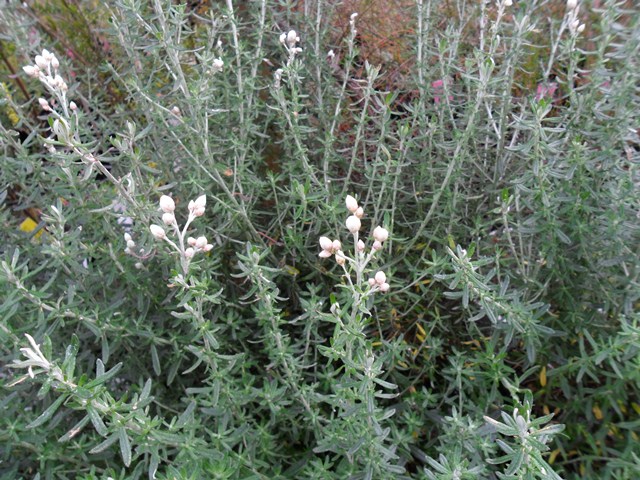Argentipallium spiceri is one of the rarest plants in Tasmania, having been recorded only 4 times in the wild, and then only as individual plants. For a while it was actually illegal to posses this plant, as having one in the garden implied that you had disturbed a natural population. Deeper botanical study revealed that the plant was an occasional hybrid, presumably between Argentipallium dealbatum and another, unidentified, daisy, possibly a member of the genus Ozothamnus. This explained the rarity of the plant and the singular occurrences.
The last record of the plant in the wild was in 2001 at Leslie Vale. Cuttings were collected of this plant, which is now dead, by the Royal Tasmanian Botanic Gardens in order to create an insurance population at the gardens. After it was realised that the species was in fact a hybrid, this became less of an imperative and some plants were sold to the public. We heard wind of this, and got further cuttings of plants from the Royal Tasmanian Botanic Gardens to propagate in the nursery.
The distribution of the species is naturally limited to the area between Longley and Huonville. If you are wandering about the bush there and see a strange plant, this may be it!
Recently we collected seed from Argentipallium dealbatum from Tolmans Hill (between Ridgeway and Mt Nelson), and germinated it in the nursery. Of the 50 seedlings pricked out, 48 grew into normal Argentipallium dealbatum, but 2 were decidedly odd. Once they grew on a bit these odd plants looked more and more like the Argentipallium spiceri that we had in the nursery. This identification was confirmed by the Tasmanian Herbarium, so now one of the parents of the hybrid is known. We will experiment with Argentipallium delabatum in the future to try to identify the other parent (which is presumably a daisy species that also grows on Tolman's Hill).
Argentipallium spiceri is a fast growing, grey-green foliaged shrub growing to about 0.5 m in dry to average conditions. It has open clusters of small, white or pinkish flowerheads that only open on sunny days. It looks good in massed plantings along with other daisies.
For further reading see https://core.ac.uk/download/pdf/33323253.pdf.
